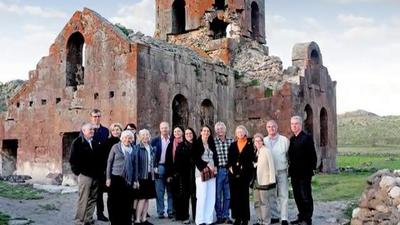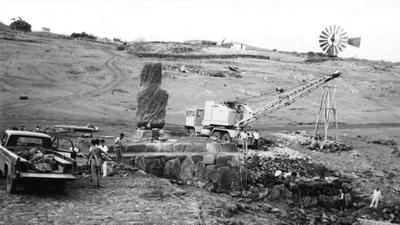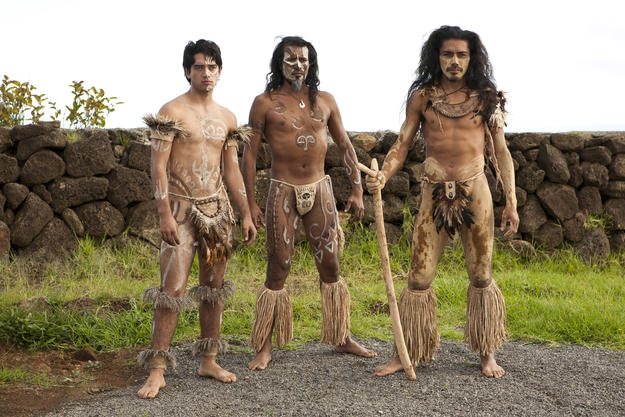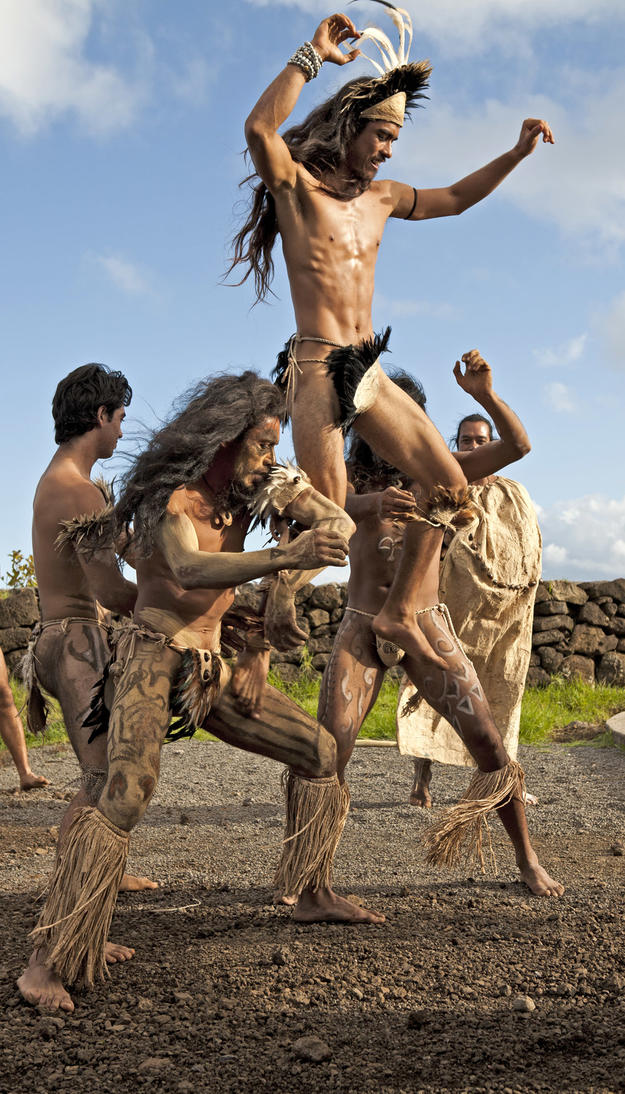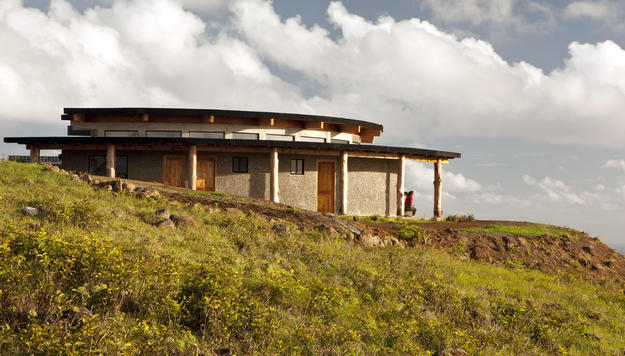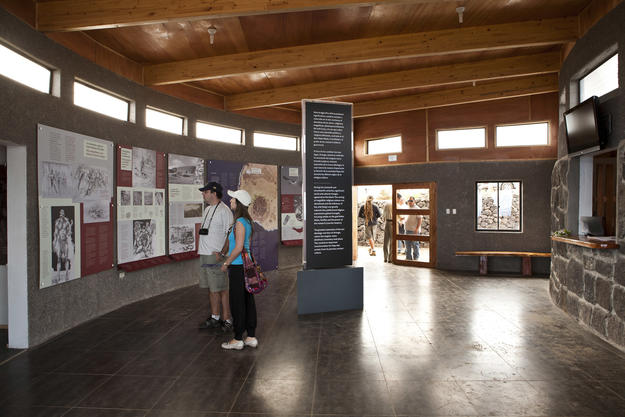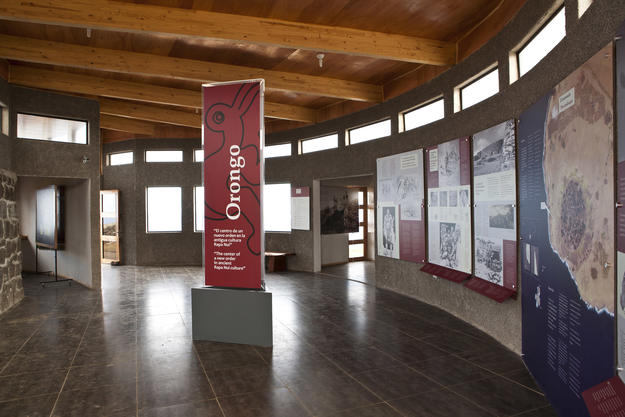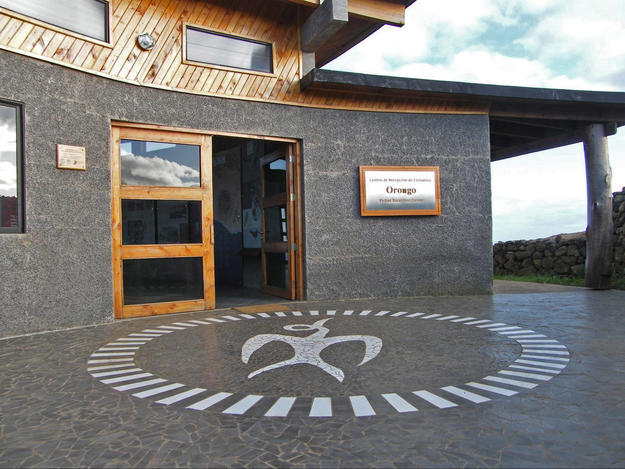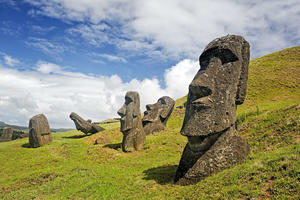Site and Significance
The Ceremonial Village of Orongo
Easter Island, known locally as Rapa Nui, is most famous for the hundreds of moai statues scattered throughout its coastline. A special territory of Chile that was annexed in 1888, the entire island, located in the southeastern Pacific Ocean, is protected within the UNESCO World Heritage site of Rapa Nui National Park. The ceremonial village of Orongo, in the south of the park, is considered among the most spectacular archaeological sites in the world.
It is perched on a narrow ridge, with the crater of the Rano Kau volcano on one side and cliffs that fall 300 meters to the sea on the other, and contains dozens of petroglyphs and stone houses dating from the Huri-Moai period (ca. 1680–1867) of Easter Island’s history. These self-contained dry-laid houses featuring sod roofs were built into the topography of the site.
The ceremonial center of Mata Ngarau in Orongo, home of the Tangata Manu (Birdman) cult that succeeded the moai culture, was the site for the annual ceremony that represented the transfer of power between competing clans. By the end of the nineteenth century, most of the Rapa Nui culture had perished or had converted to Christianity; the Tangata Manu cult collapsed and Orongo was abandoned.
Our Involvement
1996 and 2000 World Monuments Watch
World Monuments Fund (WMF) began working on Easter Island in the late 1960s, and the site was placed on the Watch in both 1996 and 2000. Together with the Corporación Nacional Forestal de Chile (CONAF), WMF has organized training courses for park rangers, conducted climate studies, collected meteorological data, carried out site protection and interpretation studies, installed monitoring systems, and developed a conservation database of the Orongo petroglyphs. Planning for conservation and site management at the Orongo Ceremonial Village began in 2001 in close consultation with community leaders and local stakeholders. Over the years WMF has held a series of workshops focused on redevelopment, interpretation, conservation, and management plans for the site.
A Modern Visitor Center
Orongo Ceremonial Village, one of the most significant archaeological sites in Rapa Nui National Park, is the most visited place on Easter Island. Unfortunately, the site has been severely impacted by the increasing numbers of tourists.
The construction of a visitor center, completed in 2011 as the last component of an intensive conservation and interpretive program supported by WMF and American Express, was designed to minimize negative impacts on the site’s fragile archeological resources. The sustainable structure incorporates both recycled construction materials and elements of existing facilities into the new building.
2020 World Monuments Watch
Despite significant steps forward in the management and conservation of the Orongo Ceremonial Village, the preservation of its unique rock carvings remains far from assured, posing a vexing challenge to the Indigenous community. The site’s exposure, as well as the inherent weakness of the bed rock, has led to considerable structural instability and the loss of irreplaceable petroglyphs. Solutions are being urgently sought by the Ma’u Henua Indigenous Community, who are now responsible for the administration of Rapa Nui National Park thanks to a sustained campaign demanding they be given greater rights and more decision-making power. The 2020 World Monuments Watch seeks to continue WMF’s engagement with this remarkable site by partnering with its true stakeholders to address critical insecurities created by the environment.
One of Seven Sites Awarded Funding by American Express
In September 2020, American Express announced $1 million in funding to support preservation efforts at seven 2020 Watch sites, including Rapa Nui National Park. Support from American Express is allowing WMF to pursue its engagement at Rapa Nui with a project to document and preserve the Mata Ngarahu petroglyph site in collaboration with the Ma’u Henua Indigenous Community.
Learn More
World Monuments Fund safeguards cultural heritage around the globe, ensuring our treasured places are preserved for present and future generations.
Sign up for our newsletter to receive regular updates on our projects, stories from the field, upcoming events, and more!
![]()
World Monuments Fund’s work at Rapa Nui has been made possible, in part, by support from The Robert W. Wilson Charitable Trust, American Express, and The Selz Foundation.
Support Our Work at Rapa Nui
Our work continues today thanks to the help of individuals like you. Use the link below to direct your gift to WMF’s next stage of work at this irreplaceable site of shared heritage.

Videos
